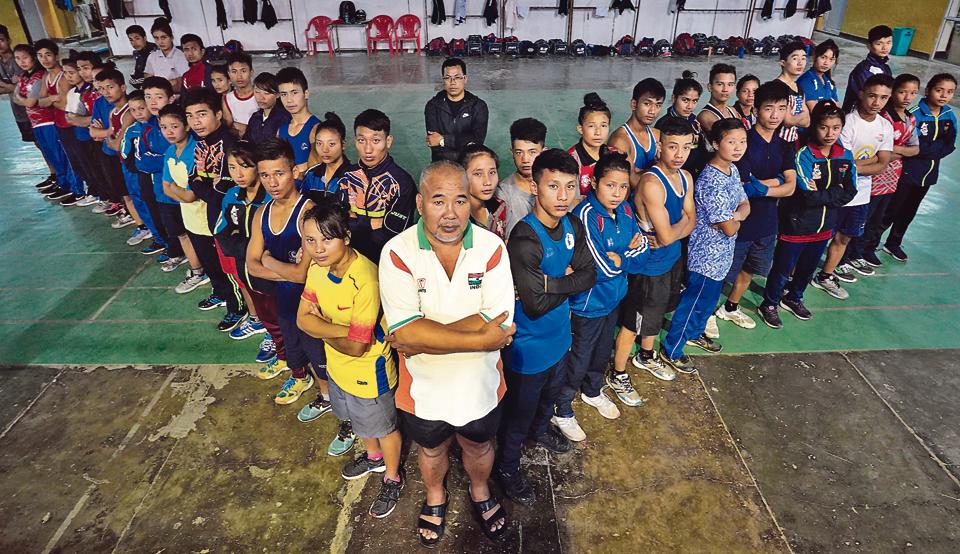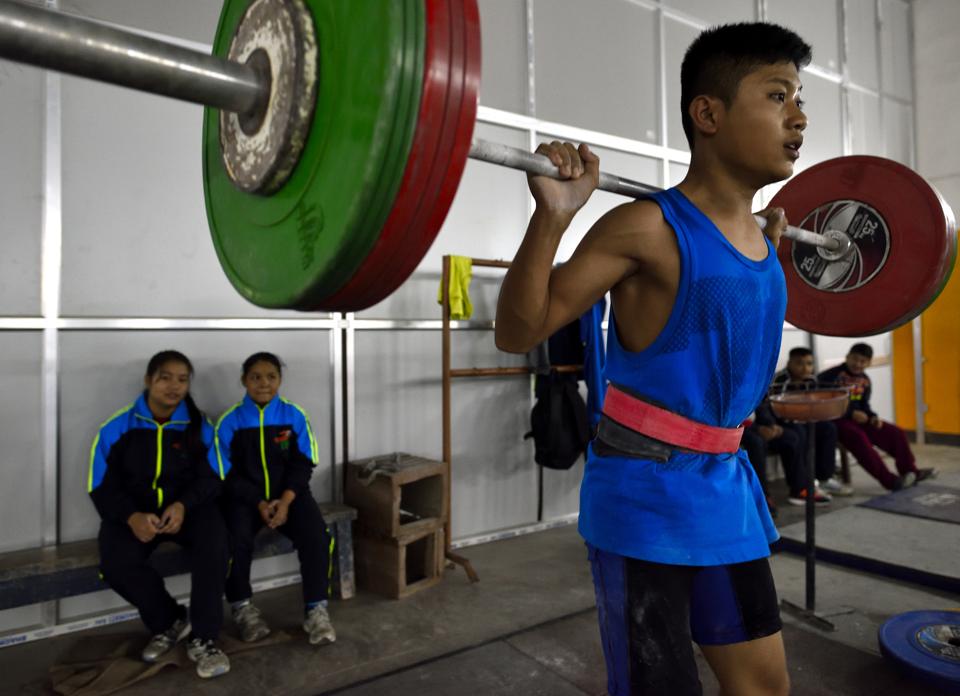How does a tiny state generate 18 Arjuna awardees and batches of star boxers, footballers, weightlifters, archers and even judo and wushu players? The answer lies partly in a tradition of community volunteering that dates back to its days as a monarchy.

It was another busy day in Ima Kheitel, the market run by women in Imphal.
Shawls, saris and phaneks (the traditional wraparound skirt) were being haggled over and sold. But in between, there was urgent, passionate analysis of something else. At first it sounded like a discussion of children’s report cards.
“The boys got too much TV.” “They have plenty of time to improve now.” “Jackson should not have missed that one.”
The previous night, the Indian U17 team had lost 4-0 to Ghana and had to bow out of the World Cup. “We followed the matches keenly. The boys have our blessings; they will all be good footballers,” says Gurumayum Chhaya Devi, 52, who sells shawls and blankets here.
They don’t just follow football. Boxing, hockey, weightlifting… name a sport and they will name their local star.

Eight players from Manipur are on the India U17 football team; another three are on the current men’s team — and 13 on the national women’s team.
As intrinsic as music and dance are to many cultures, sports is to Manipur’s, says Naoba Thangjam, CEO of the North Eastern Re-Organising Cultural Association (NEROCA) football club.
That only partly explains how a state of under 28 lakh people has produced 18 Arjuna awardees and makes up 38% to 50% of the country’s national Under-17 and senior women’s football teams.
Eight players from the state are on the U17 team. And while the current men’s team has three players from Manipur, there have been as many as seven playing for India at a time.
This despite the fact that Manipur is one of the most militarised zones in the country — as a result of a separatist movement that has raged since the 1960s — and faces frequent shutdowns and blockades, including one this year that stretched over more than five months.
CLUB CULTURE
 “I have travelled across the country and have not seen any community support local clubs as we do here,” says Thangjam.
“I have travelled across the country and have not seen any community support local clubs as we do here,” says Thangjam.
There are over 1,000 small sports clubs across Manipur, most run by volunteers. “This spirit of volunteering for a cause can be traced to the pre-colonial Manipuri tradition of lallup,” says RK Nimai Singh, an IAS officer who retired as Manipur’s commissioner of sports and youth affairs, in 2014.
Lallup, he explains, is a tradition that existed when Manipur was a monarchy, where every male between 17 and 60 was encouraged to place his services at the disposal of the state, voluntarily, for a certain number of days a year.
This used to mean that the men would work on public projects such as roads and monuments.
“The practice died out during British rule. But the spirit of lallup seems to have become an integral part of how sports is organised and promoted at the local level,” Nimai Singh says.
Local clubs are started, run and funded by local communities; volunteers provide their services — from former sportsmen and sportswomen training youngsters, to donors offering equipment, subsidising or paying for meals for trainees, even maintaining the physical structures of the clubs and helping send players to tournaments outside the state.
These clubs form the backbone of the strong sports culture in the state — supporting a range of disciplines from boxing and football to hockey, judo and archery.

When Manipur was a monarchy, every male between 17 and 60 was encouraged to place his services at the disposal of the state for a certain number of days each year.
“Most players who emerge from Manipur start out with a community club,” Nimai Singh says. “This is largely unique to Manipur. Except for certain sports in a few states like Goa and West Bengal, clubs in India are not a deep-rooted part of society.”
The Social Reformers Club in Imphal, for instance, is 45 years old and runs on funds collected door-to-door, voluntary donations and an annual Holi raffle.
The club has a small room and a community ground used for football, hockey, shooting and archery.
“Two years ago, a taekwondo player from the locality got a chance to play in a national- level meet in Mumbai but could not afford to go. We had a meeting to figure out who in the community could help him, someone volunteered to fund his trip and he won bronze,” says Chinglemba Ran Lairenlakpam, 29, a core member.
The system creates a virtuous cycle. “A footballer from our club, Dharmachandra, now plays for Mumbai FC. Whenever he is in Imphal, he spends some time helping our boys and girls train,” Chinglemba says.
Source: Hindustan Times
